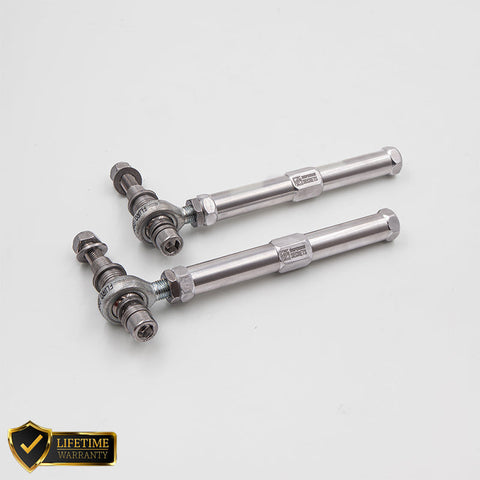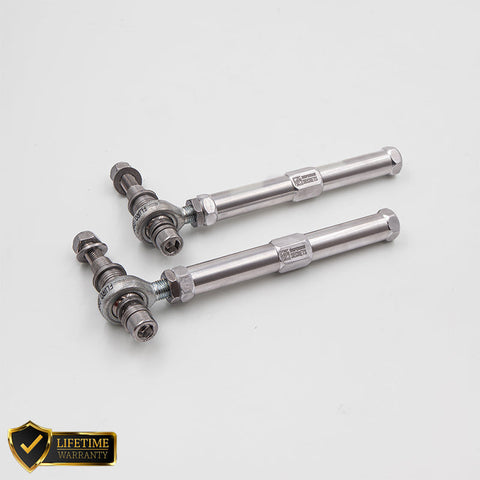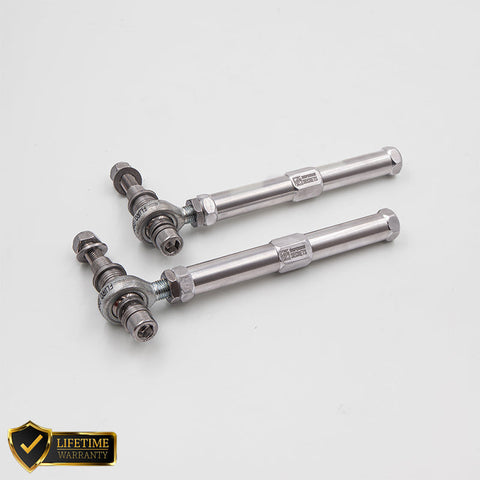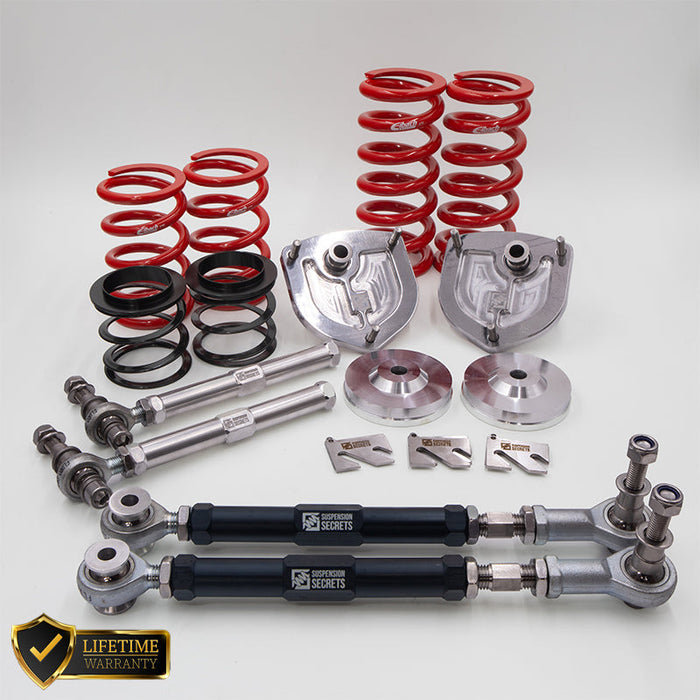

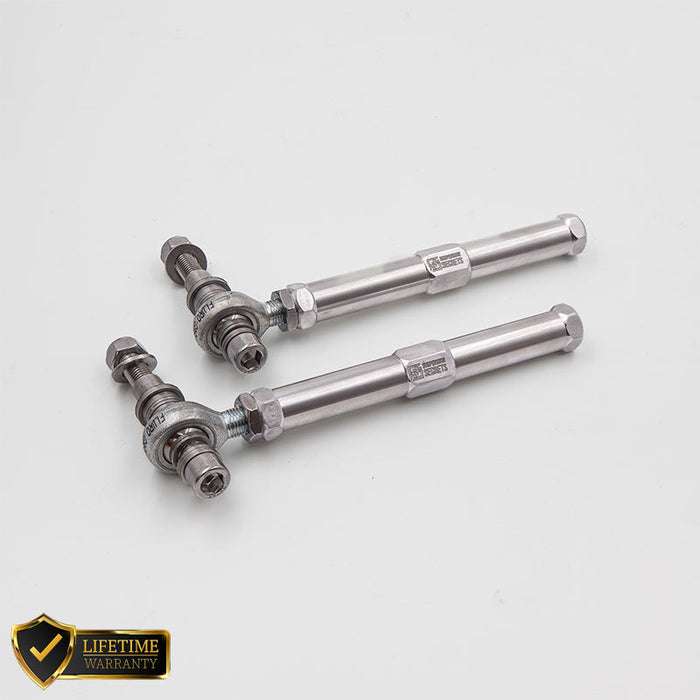
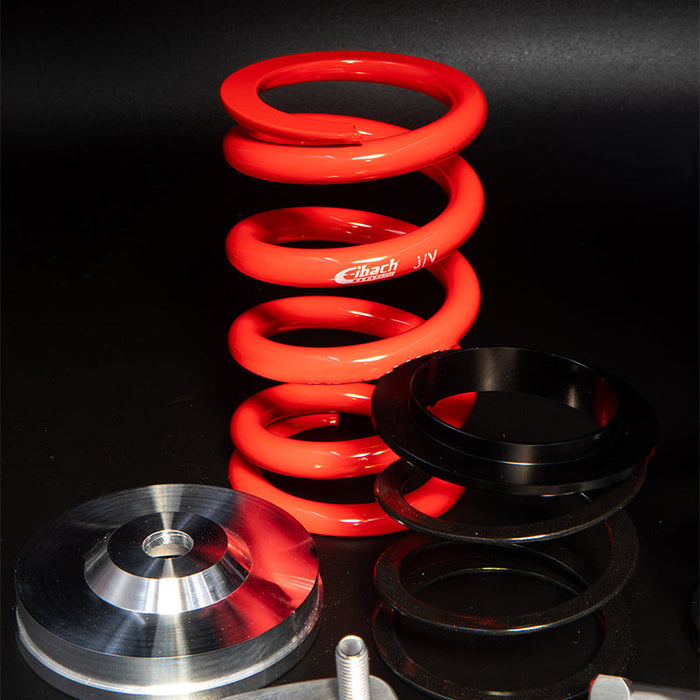
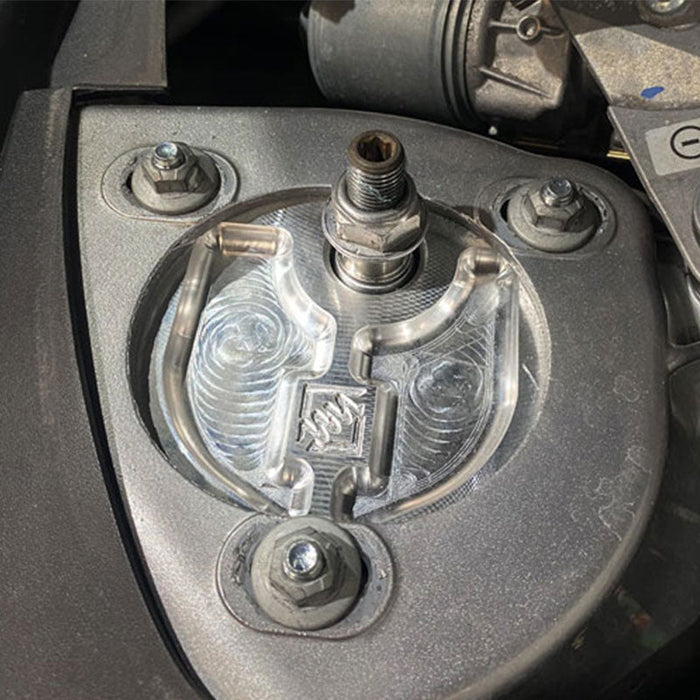
Suspension Secrets Circuit Handling Pack Kinematics Kit - Porsche 718 GT4 RS
£2,499.17
Derived from extensive track testing in the hands of professional drivers and utilising the best data analysis equipment, our Circuit Handling Pack offers the perfect blend of components to transform the chassis of the 718 Cayman GT4 RS out on track.
After multiple track tests with GT4 RS' as standard with the stock components maximised in terms of their setup we began developing a list of improvements for the handling and designed the solutions to each item identified. All of our designed solutions are included in this handling pack to maximise grip, utilise the full contact patch of the tyre and improve the chassis balance substantially.
The main benefits of the Suspension Secrets Circuit Handling Pack for the Porsche 718 Cayman GT4 RS are:
- Greatly improved cornering grip
- Reduced understeer
- Lower ride height at the front and rear
- Removal of bump-steer resulting in more accurate steering at the limit
- Reduced body roll and increased control due to stiffer springs front and rear
- Increased braking stability
- More neutral chassis balance
- Improved tyre wear due to increased front and rear camber
The pack itself contains multiple upgraded components that work as direct replacements for existing OEM parts; no additional chassis or body modifications are required. The Circuit Handling Pack includes:
- Suspension Secrets top mounts with increased camber and caster
- Upgraded front and rear Eibach racing springs with increased (stiffer) spring rate and shorter than OEM to allow for increased lowering of the chassis
- Suspension Secrets spring cups which help retain the original bump/droop ratio of the damper even after the car has been lowered
- Suspension Secrets bump-steer tie rod ends which help to remove unwanted bump-steer
- Suspension Secrets adjustable rear toe arms to allow for unrestricted rear camber settings
- Suspension Secrets camber shim kit
PLEASE NOTE: The Track Focused option includes stiffer front and rear springs
Suspension Secrets' products are designed and manufactured in the UK. Our products are made high quality materials including billet aircraft-grade 6082 T6 aluminium and corrosion-resistant stainless steel, and use motorsport-spec Fluro bearings for maximum performance and longevity.
Further Reading
As our Porsche Circuit Handling Pack improves multiple aspects of your Porsche's geometry, we'll go into more detail and explain how our Circuit Handling Pack transforms how your Porsche handles.
Camber
Camber angle is the angle between the plane of a wheel and the vertical. It is described as positive when the top of the wheel leans outward and negative when the top of the wheel leans inward.
Negative camber is important for improving cornering grip. The animation below demonstrates camber angle, which can be changed on your Porsche using our custom-designed top mounts.

In a corner, the lateral load transfer through the body causes the vehicle to roll. When the car encounters roll, it raises the inside contact patch of the outside wheel. This reduces overall grip. But at the same time, the outside wheels are more heavily loaded due to the weight transferring onto them.
A car with the correct amount of negative camber will essentially have neutral camber as the full contact patch is used as the car rolls, giving far more grip and feedback.
Caster
Caster is the measure of how far forward or behind the steering axis is to the vertical axis, viewed from the side. The animation below illustrates caster angle, which is set to the ideal position by our custom-designed offset top mounts.

Bump-Steer
Bump steer is a change in the steering angle of the wheel when the wheel is in bump or droop without turning of the steering wheel. This is due to the arc patterns of the wishbones and the steering arm having different radii and start points.
Bump steer is highly undesirable especially on tracks or roads that contain bumps. Bumps and undulations cause the suspension to constantly transition between bump and droop and the steering of a car with bump-steer will constantly be shifting the steering angle of the car, which destabilises the front end.
Tech specs.
All of the components in our Porsche Circuit Handling Pack are designed and manufactured in the UK. Our components are CNC-machined from billet 6082 T6 aluminium, and we use SKF and Fluro bearings which are used by high-end OE manufacturers, and Formula 1 teams respectively, for consistency and performance in all weather conditions.
The technical highlights of our Porsche Circuit Handling Pack include:
- Increased positive caster
- Increased bump-to-droop ratio by 15mm with a lower front ride height, which increases damper efficiency
- Increased negative front axle camber with a minimum of 2.5 degrees and a maximum of 4.5 degrees
- Complete removal of bump-steer
- Rear camber shims increased rear axle negative camber by an additional 1 degree
- Cold-formed, high performance specially developed Eibach racing springs
Development & Testing
Our Porsche Circuit Handling Pack is the result of an intensive and extensive development period .
It begun when we took the existing and competent chassis of the 991-generation GT3 RS and sought to make it even better. A six month testing period saw us perfect the settings for our Porsche GT setup using the standard points of adjustment, but this process also revealed some of the shortcomings of the GT3 RS' chassis.
Our data-logging had revealed that more time could be gained through the corners, but we had run out of adjustment with the standard Porsche componentry. We 3D scanned the entire suspension assembly, and then CAD modelled it in order to work out just where the limitations were, and how they could be improved.
We completely re-designed the existing Porsche top mount, and created our own. Our top mount offers additional caster adjustment and far greater fidelity when adjusting camber levels. This improvement in geometry helps to really improve how responsive and accurate the GT3 RS' front axle is.
With our Porsche track setups, we run quite a bit of rake. Rake angle is the difference in ride height between the front and rear axles, and having the nose lower than the rear helps to reduce understeer and improve turn-in. Having rake angle can cause the rear-end of a Porsche to destabilise slightly, so we calculated a bespoke spring rate that improves cornering whilst also increasing braking stability.
Our billet aluminium spring cups are designed to reset the damper ratio when running a lower nose height. This means you can run a lower nose, to help improve response and reduce understeer, whilst not compromising on damper travel, which is essential for circuit use.
After we lowered the GT3 RS, we realised that we were encountering bump-steer. We designed our bump-steer tie rod ends to help reset the position of the steering arms, which helps to eliminate bump-steer entirely from the chassis.
We had identified the shortcomings of the GT3 RS' chassis, and had devised solutions to each of the issues; the next stage was to 3D print prototype components and to test if they fit, and if they gave the improvements we were after.
Test-fitting was concluded and all the parts worked seamlessly with the existing Porsche components. We then had our improved components machined and real testing was undertaken at both Donington Park and Silverstone.
Testing and logging at Donington revealed that all of our upgrades contributed to a lap time that was a massive 2 seconds faster than a lap using just the standard Porsche components. Silverstone saw equal amounts of success, with a scarcely-believable 3 seconds being knocked off the GT3 RS' previous best lap.
The benefits and strength of our components was confirmed and we duly signed off the Suspension Secrets Porsche Circuit Handling Pack and began to offer it to our customers.
We are confident in the performance improvements that our Circuit Handling Pack gives, so we've compiled some data from our testing process that compares two lap times around Silverstone GP by a Porsche 911 GT3 RS Weissach Edition. This car was driven by the same professional driver, and it was equipped with Michelin Pilot Sport Cup 2 R tyres.
One lap, represented by the red lines on the graph below, illustrates the fastest lap recorded by the Porsche when it was maxed-out with the most aggressive settings achievable with the standard Porsche components. The lap time was 2.18.449.
The second lap, represented by the blue lines, is the fastest lap recorded after our Porsche Circuit Handling Pack was fitted and setup for maximum track performance. This lap time was 2.15.379.

This translates into a far better run into the Maggots/Becketts complex. This difference in speed is illustrated in the graph below where the two horizontal black lines are on the data trace. Notice how the speed trace at the end of straight leading into the Maggots/Becketts complex is far more angular compared to the regular car. This shows how the added braking stability given by our damper-ratio resetting spring cups influences how much more decisively and confidently a driver can brake with our Circuit Handling Pack equipped.

The increased amount of grip of our stiffer springs meant our driver could get on the brakes harder and with more stability, which also meant the entry speed into a corner could be judged far more accurately. The braking confidence and added grip from the Circuit Handling Pack components meant the GT3 RS pulled an extra 0.42 G of cornering force into the fast right at Maggots, which meant the car was also able to carry far more speed through the corner, registering 95.2 mph at the apex versus 82.7 mph from the non-Circuit Handling Pack equipped car.
The previous graphs have demonstrated how the Circuit Handling Pack allows you to carry more confidence and speed through faster corners but it also gives improvements in lower speed corners, where mechanical grip and chassis balance are essential.
The graph below shows the data from the two lap times compared as the Porsche negotiated the long, slow right-hander at Luffield. The GT3 RS with our Circuit Handling Pack pulled 0.16 more lateral G and carried 6.9 mph through the apex of the corner. Whilst this might not seem like much, that extra 6.9 mph will make a significant difference by the end of the straight after Luffield.

Our data exploration has demonstrated that in key areas over the course of a lap, our Circuit Handling Pack gives a driver more confidence in the car, and gives more cornering performance in fast and low speed corners. If you look closely at the data, the speeds on the straights and on the brakes are much the same. The key difference is the confidence with which the driver can choose their entry speed or brake release points, each of these areas yields a small gain which make the big difference over the course of a lap.
The lap times we've analysed were captured using a Porsche 911 GT3 RS Weissach Edition at Silverstone GP circuit on a track day. Some irregularities in the data tracing may be due to overtakes or traffic that our driver had to negotiate, but regardless, the 3.07 second lap time improvement thanks to our Porsche Circuit Handling Pack demonstrates a vast difference in speed between a Circuit Handling Pack equipped car, and a standard car that was made as track-focussed as possible with the standard Porsche components.
Video
Watch the video below as our Porsche 718 GT4 fitted with our Porsche Circuit Handling Pack gets driven around Silverstone Circuit in the hands of professional racing driver and RMA track days MD Leyton Clarke.
Welcome to our store
WORKING WITH THE BEST
PORSCHE HERITAGE

Our History with Porsche is hardwired. Having intertwined with the Porsche Motorsport community alongside our sister company in the repairing, upgrading, and servicing Turbocharges for some of the most exciting Porsche racing legends.
Our Story

